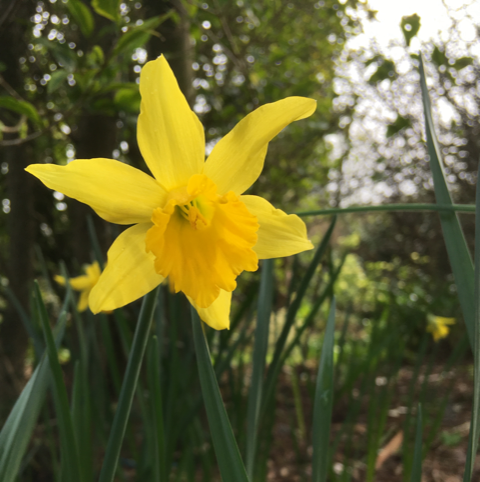February can be misleading. Sometimes, here on the Roseland with our little microclimate, it can lull us in to a false sense of spring with warm sunshine and brave spring flowers. But then winter will arrive for several days with bitter winds and scarf-penetrating rain.
Although it’s hard to notice any trends when the weather can be so changeable, it does seem in recent years that February has become our winter month, sometimes extending in to March with continuing snow (although usually only ‘up North’)
Gardeners’ fingers will be tingling, seeing the tantalizing sunshine and thinking it will be OK to get on with planting, but should hold off for now. After all, the now legendary Beast From The East did not arrive with us until the 1stMarch in 2018.
It can also be misleading for wildlife, although frogspawn laid in February does appear to do just fine!
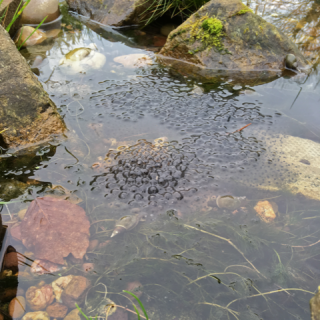
Trees and shrubs
Deciduous trees and shrubs are still dormant now, unless we’ve had an exceptionally mild winter, so pruning can still be carried out. Even apples and pears, so long as the tree is pruned before the blossom opens, will be fine. Finish pruning roses too, and tying in climbing roses. My roses really love a couple of handfuls of pelleted chicken manure or a mulch of my chicken manure compost for extra flowers in the summer.
If you keep buddlejas for the masses of butterflies they attract when in flower, cut them right back in February. Buddlejas flower on this year’s growth so pruning them will encourage a greater number of flowers. An (approximate) rule of thumb, depending on the variety, would be to cut them down to a third to one half of the ultimate height you want in the summer (this works for roses too!). Some newer varieties do not get very large so just give them a trim and take out the oldest, thickest stems low down to encourage more.
Some clematis will need pruning now. There can seem to be many rules and timings surrounding the pruning of clematis, but essentially you should prune late flowering ones in February, down to 30 – 45cm above the ground and just above a healthy pair of buds. This is because late flowering clematis flower on the current year’s growth, so prune them in February to encourage lots growth for this year.
Most of the big, blowsy, brightly coloured clematis flower in May and June, so leave these for now. Although if they desperately need a trim, wait until the buds emerge then cut back to a pair of buds. Here is the RHS’s advice on pruning clematis https://www.rhs.org.uk/plants/clematis/pruning-guide
If you love flowers at this time of year, it is always worth seeing if you have room for a pretty camellia or a wonderfully scented witch hazel. I cannot do without the latter and have planted one in every garden I have owned.
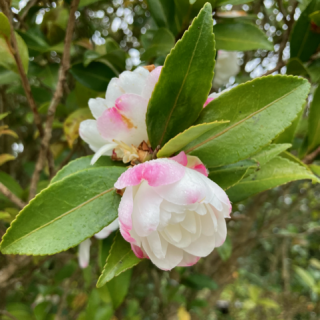
Herbaceous borders
Brave spring bulbs will be popping up here and there. Crocuses, winter aconites and some early daffodils should already be gleaming against the dark (and often sodden!) soil. Cyclamen coum may also be in full flower. These tough little plants are just that – so beautiful but so detailed that I like to have them in pots on a table so I can see them properly!
When your snowdrops start to go over they can be lifted, separated and spread out over a larger area, because who doesn’t love more snowdrops?
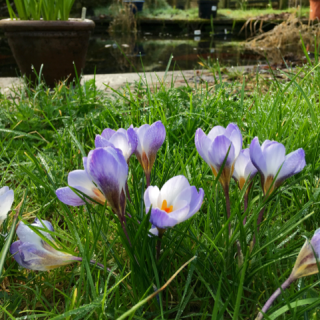 Herbaceous plants may be making a gentle appearance, fat shoots of green appearing above the soil, again making us gardeners think that spring must be literally just around the corner! But these hardy plants, day lilies, asters, Iris siberica, are all very hardy and don’t mind the frost. The dead stems can be cut back later this month, and grasses cut down to 15cm (apart from Carex varieties, these just need combing through and tidying).
Herbaceous plants may be making a gentle appearance, fat shoots of green appearing above the soil, again making us gardeners think that spring must be literally just around the corner! But these hardy plants, day lilies, asters, Iris siberica, are all very hardy and don’t mind the frost. The dead stems can be cut back later this month, and grasses cut down to 15cm (apart from Carex varieties, these just need combing through and tidying).
Planting hardy herbaceous plants can be done, providing the soil is not frozen. If there is a frost, just check on them and gently heel them back into the soil if they have been pushed up.
Take root cuttings this month, especially from your favourite oriental poppies. Many are hybrids and will not grow true from seed, so increase their number via root cuttings.
If you don’t have many flowers in your garden and would like to provide more for any insects waking on a sunny day, plant some primulas, violas and pansies to provide a bit of food. Bergenias are also excellent food for a passing bee.
The worst of February days are good times to sit indoors, fire on, hot chocolate in hand and browse through this year’s flower seed, tuber and plug plant catalogues and websites. Although with the recent rise in popularity of dahlias and other cutting flowers, it’s best to get your order in as early as possible! Popular varieties sell out fast.
Don’t be tempted to sow these seeds too early. Assume about 6 weeks from sowing to the point where the seedlings will be really quite large, and unless you have a decent greenhouse or polytunnel, you may run out of room for them while the weather is still wintery outside. Some hardy seeds can be sown outdoors, but it’s probably a good idea to wait until March unless you can put them under cover. Cold, wet soil can cause them to rot before they germinate.
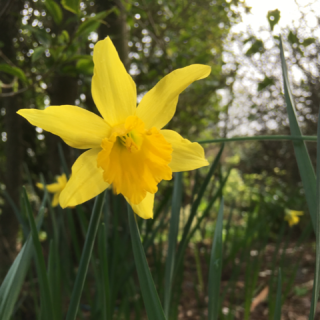
Vegetables
Although it is too early to sow flower seeds, vegetable seeds can be started now, especially if you have a heated propagator. Chillies and tomatoes can be started in a propagator (or an airing cupboard as a friend of mine swears by) whilst cabbages, leeks, radishes, broccoli, Brussel sprouts, kale, onions and lettuce can be sown outdoors under a cloche to warm the soil a little and prevent it from becoming too wet.
Hardy veg such as peas and beans can be sown directly outside, although there is no harm in starting seeds in long, tall pots – carboard toilet roll tubes are ideal – then planting out later. Sow every three or four weeks for a succession of veg later on.
There is still time to plant bare root raspberry canes, and there is nothing nicer than sweet, fresh raspberries picked on a sunny day! Ours very rarely make it into the house and into a dish, they are eaten straight from the bush.
Just a tip for if you live in an exposed spot by the sea – autumn fruiting raspberries can often be damaged by September storms so it may be worth considering summer fruiting plants, even the new bush varieties out now which can fruit from June.
I have my fingers crossed for a benevolent month weather-wise! With just the odd day of freezing temperatures to kill off some garden pests naturally.
Caroline Kenzie
Papaver Garden Design and Tuition (link to go on this text)

